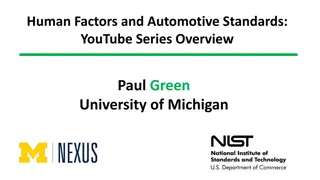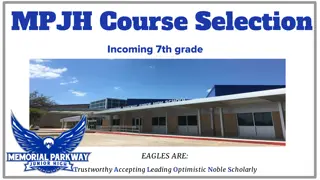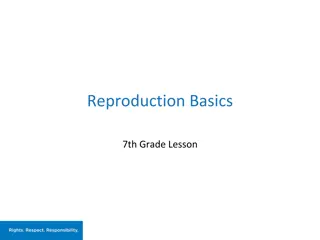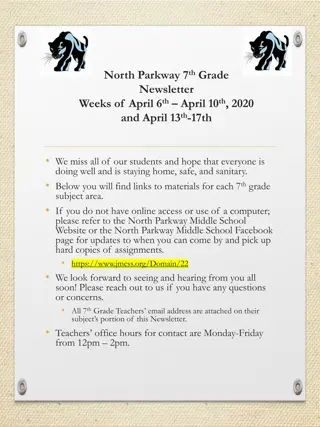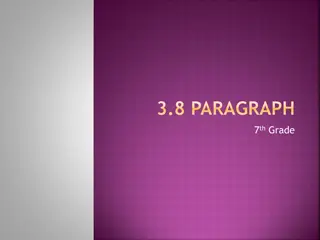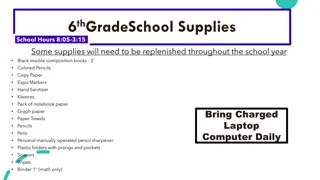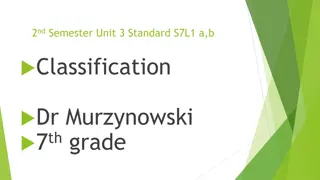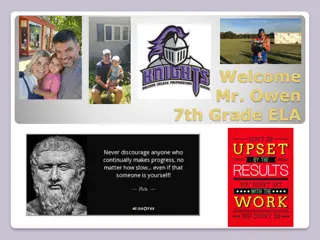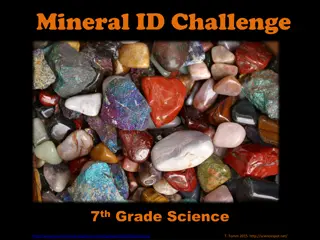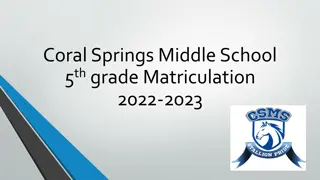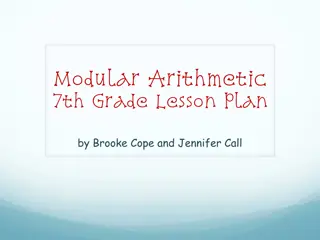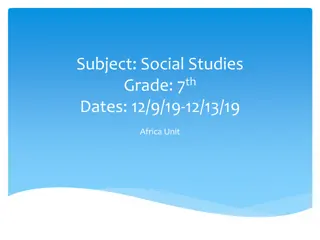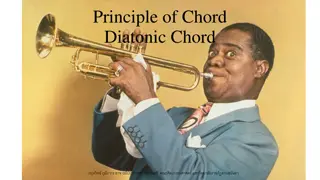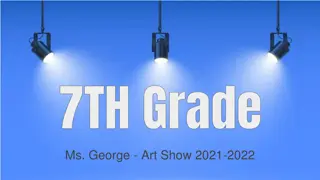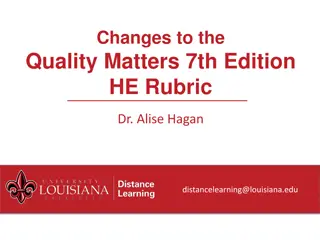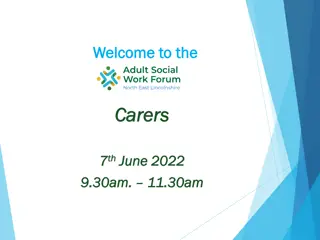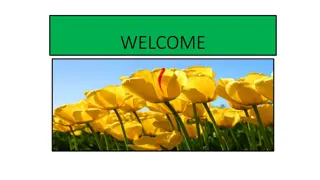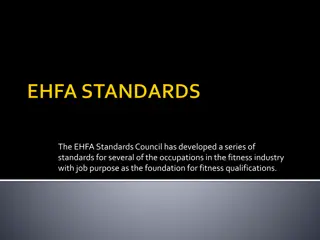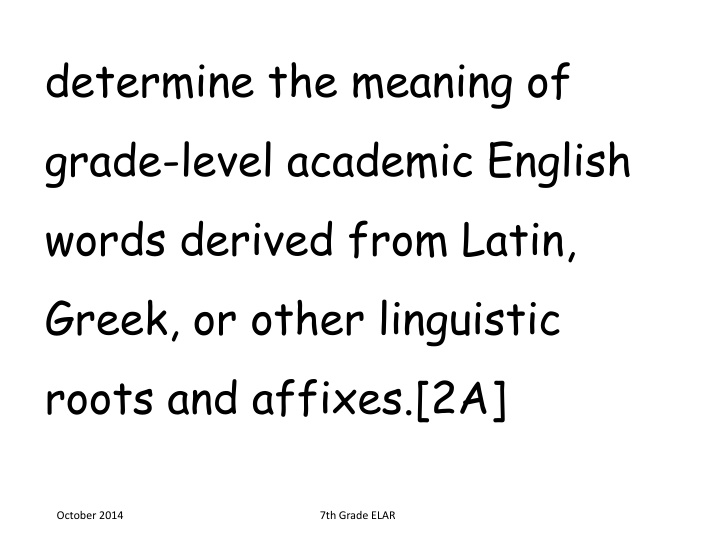
Enhancing 7th Grade ELAR Skills through Language Analysis
Explore the 7th Grade ELAR curriculum focusing on analyzing words derived from Latin, Greek, and other linguistic roots to understand their meanings. Learn how to use context, complete analogies, identify foreign words, and utilize reference tools effectively. Dive into literary text comprehension, theme, and genre analysis, describing multiple themes in fiction and conventions in myths and epic tales, while also examining the influence of place and time on literary works.
Download Presentation

Please find below an Image/Link to download the presentation.
The content on the website is provided AS IS for your information and personal use only. It may not be sold, licensed, or shared on other websites without obtaining consent from the author. If you encounter any issues during the download, it is possible that the publisher has removed the file from their server.
You are allowed to download the files provided on this website for personal or commercial use, subject to the condition that they are used lawfully. All files are the property of their respective owners.
The content on the website is provided AS IS for your information and personal use only. It may not be sold, licensed, or shared on other websites without obtaining consent from the author.
E N D
Presentation Transcript
determine the meaning of grade-level academic English words derived from Latin, Greek, or other linguistic roots and affixes.[2A] October 2014 7th Grade ELAR
use context (within a sentence and in larger sections of text) to determine or clarify the meaning of unfamiliar or ambiguous words.[2B] October 2014 7th Grade ELAR
complete analogies that describe part to whole or whole to part.[2C] October 2014 7th Grade ELAR
identify the meaning of foreign words commonly used in written English with emphasis on Latin and Greek words (e.g., habeus corpus, e pluribus unum, bona fide, nemesis).[2D] October 2014 7th Grade ELAR
use a dictionary, a glossary, or a thesaurus (printed or electronic) to determine the meanings, syllabication, pronunciations, alternate word choices, and parts of speech of words.[2E] October 2014 7th Grade ELAR
Reading / Comprehension of Literary Text / Theme and Genre. Students analyze, make inferences, and draw conclusions about theme and genre in different cultural, historical, and contemporary contexts and provide evidence from the text to support their understanding.[3] October 2014 7th Grade ELAR
describe multiple themes in a work of fiction.[3A] October 2014 7th Grade ELAR
describe conventions in myths and epic tales (e.g., extended simile, the quest, the hero's tasks, circle stories).[3B] October 2014 7th Grade ELAR
analyze how place and time influence the theme or message of a literary work.[3C] October 2014 7th Grade ELAR
Reading / Comprehension of Literary Text / Poetry. Students understand, make inferences and draw conclusions about the structure and elements of poetry and provide evidence from text to support their understanding.[4] October 2014 7th Grade ELAR
analyze the importance of graphical elements (e.g., capital letters, line length, word position) on the meaning of a poem.[4A] October 2014 7th Grade ELAR
Reading / Comprehension of Literary Text / Drama. Students understand, make inferences and draw conclusions about the structure and elements of drama and provide evidence from text to support their understanding.[5] October 2014 7th Grade ELAR
explain a playwright's use of dialogue and stage directions.[5A] October 2014 7th Grade ELAR
Reading / Comprehension of Literary Text / Fiction. Students understand, make inferences and draw conclusions about the structure and elements of fiction and provide evidence from text to support their understanding.[6] October 2014 7th Grade ELAR
explain the influence of the setting on plot development.[6A] October 2014 7th Grade ELAR
analyze the development of the plot through the internal and external responses of the characters, including their motivations and conflicts.[6B] October 2014 7th Grade ELAR
analyze different forms of point of view, including first- person, third-person omniscient, and third-person limited.[6C] October 2014 7th Grade ELAR
Reading / Comprehension of Literary Text / Literary Nonfiction. Students understand, make inferences and draw conclusions about the varied structural patterns and features of literary nonfiction and provide evidence from text to support their understanding.[7] October 2014 7th Grade ELAR
describe the structural and substantive differences between an autobiography or a diary and a fictional adaptation of it.[7A] October 2014 7th Grade ELAR
Reading / Comprehension of Literary Text / Sensory Language. Students understand, make inferences and draw conclusions about how an author's sensory language creates imagery in literary text and provide evidence from text to support their understanding.[8] October 2014 7th Grade ELAR
determine the figurative meaning of phrases and analyze how an author's use of language creates imagery, appeals to the senses, and suggests mood.[8A] October 2014 7th Grade ELAR
Reading / Comprehension of Informational Text / Culture and History. Students analyze, make inferences and draw conclusions about the author's purpose in cultural, historical, and contemporary contexts and provide evidence from the text to support their [9] October 2014 7th Grade ELAR
explain the difference between the theme of a literary work and the author's purpose in an expository text.[9A] October 2014 7th Grade ELAR
Reading / Comprehension of Informational Text / Expository Text. Students analyze, make inferences and draw conclusions about expository text and provide evidence from text to support their understanding.[10] October 2014 7th Grade ELAR
evaluate a summary of the original text for accuracy of the main ideas, supporting details, and overall meaning.[10A] October 2014 7th Grade ELAR
distinguish factual claims from commonplace assertions and opinions.[10B] October 2014 7th Grade ELAR
use different organizational patterns as guides for summarizing and forming an overview of different kinds of expository text.[10C] October 2014 7th Grade ELAR
synthesize and make logical connections between ideas within a text and across two or three texts representing similar or different genres, and support those findings with textual evidence.[10D] October 2014 7th Grade ELAR
Reading / Comprehension of Informational Text / Persuasive Text. Students analyze, make inferences and draw conclusions about persuasive text and provide evidence from text to support their analysis.[11] October 2014 7th Grade ELAR
analyze the structure of the central argument in contemporary policy speeches (e.g., argument by cause and effect, analogy, authority) and identify the different types of evidence used to support the argument.[11A] October 2014 7th Grade ELAR
Reading / Comprehension of Informational Text / Procedural Texts. Students understand how to glean and use information in procedural texts and documents.[12] October 2014 7th Grade ELAR
follow multi-dimensional instructions from text to complete a task, solve a problem, or perform procedures.[12A] October 2014 7th Grade ELAR
explain the function of the graphical components of a text.[12B] October 2014 7th Grade ELAR
Reading / Media Literacy. Students use comprehension skills to analyze how words, images, graphics, and sounds work together in various forms to impact meaning. Students[13] October 2014 7th Grade ELAR
interpret both explicit and implicit messages in various forms of media;[13A] October 2014 7th Grade ELAR
interpret how visual and sound techniques (e.g., special effects, camera angles, lighting, music) influence the message;[13B] October 2014 7th Grade ELAR
evaluate various ways media influences and informs audiences; and[13C] October 2014 7th Grade ELAR
assess the correct level of formality and tone for successful participation in various digital media.[13D] October 2014 7th Grade ELAR
Writing / Literary Texts. Students write literary texts to express their ideas and feelings about real or imagined people, events, and ideas.[15] October 2014 7th Grade ELAR
write an imaginative story that[15A] October 2014 7th Grade ELAR
write an imaginative story that sustains reader interest.[15Ai] October 2014 7th Grade ELAR
write an imaginative story that includes well-paced action and an engaging story line.[15Aii] October 2014 7th Grade ELAR
write an imaginative story that creates a specific, believable setting through the use of sensory details.[15Aiii] October 2014 7th Grade ELAR
write an imaginative story that develops interesting characters.[15Aiv] October 2014 7th Grade ELAR
write an imaginative story that uses a range of literary strategies and devices to enhance the style and tone.[15Av] October 2014 7th Grade ELAR
write a poem using[15B] October 2014 7th Grade ELAR
write a poem using figurative language (e.g., personification, idioms, hyperbole).[15Bii] October 2014 7th Grade ELAR
write a poem using graphic elements (e.g., word position).[15Biii] October 2014 7th Grade ELAR
Writing. Students write about their own experiences.[16] October 2014 7th Grade ELAR
write a personal narrative that has a clearly defined focus and communicates the importance of or reasons for actions and / or consequences.[16A] October 2014 7th Grade ELAR

